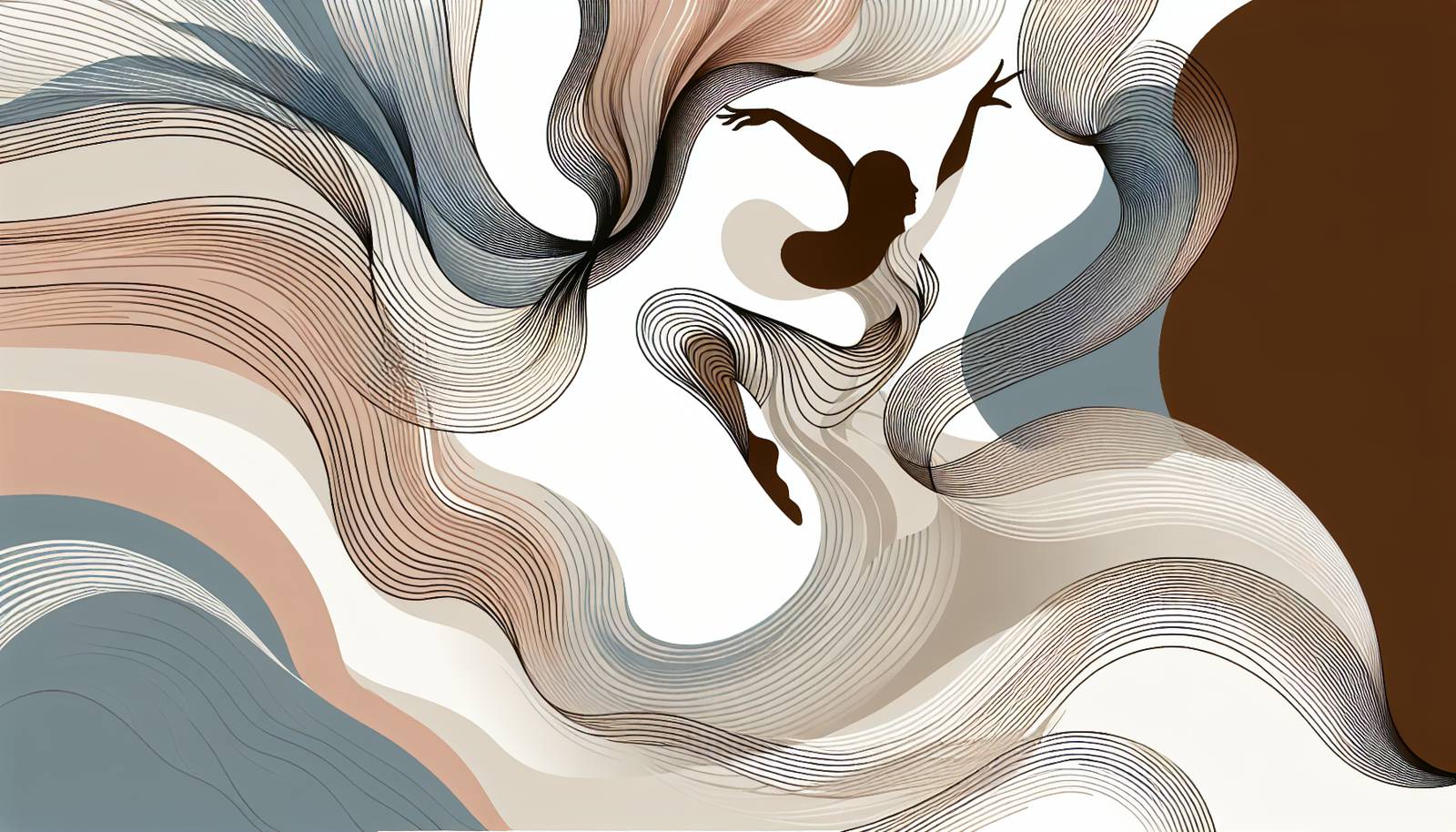
FAQ About The Influence of Post-Modern Dance on Contemporary Performance Art

What is post-modern dance?
Post-modern dance is a dance movement that emerged in the 1960s as a reaction against the formalism and structure of modern dance. It emphasizes conceptual approaches, improvisation, and often incorporates pedestrian movements. Post-modern dance seeks to blur the lines between different dance forms and everyday life, focusing more on the experience and concept rather than technical perfection.

How did post-modern dance originate?
Post-modern dance originated in the 1960s in New York City, primarily at the Judson Dance Theater, where artists began rejecting the constraints of traditional modern dance. Influenced by other art forms like visual art and theater, pioneers such as Yvonne Rainer, Trisha Brown, and Steve Paxton explored minimalism, improvisation, and audience interaction. This movement sought to democratize dance, making it accessible and relatable to everyday life.

Who are some key figures in post-modern dance?
Key figures in post-modern dance include Yvonne Rainer, Trisha Brown, Steve Paxton, and Merce Cunningham, among others. These choreographers and dancers were instrumental in pushing the boundaries of what dance can be, focusing on experimentation and breaking down traditional dance conventions. Their work has been influential in shaping both post-modern and contemporary dance practices.

What distinguishes post-modern dance from traditional modern dance?
Post-modern dance differs from traditional modern dance in its emphasis on process over product, the use of improvisation, and the inclusion of everyday movements. While traditional modern dance often focuses on technique and narrative, post-modern dance seeks to break free from these confines, exploring dance as a form of human expression that is integrated into daily life and accessible to all individuals, regardless of their technical ability.

How has post-modern dance influenced contemporary performance art?
Post-modern dance has significantly influenced contemporary performance art by introducing concepts of deconstruction, collaboration, and hybridization. Dancers began to blend movement with other art forms, such as theater, visual arts, and digital media, to create interdisciplinary works. This has led to innovative storytelling methods that push the boundaries of what performance art can be, challenging audiences to engage with art in new and dynamic ways.

What are some examples of post-modern dance techniques?
Post-modern dance techniques include the use of contact improvisation, minimalistic movements, site-specific performances, and the integration of pedestrian actions. Choreographers might incorporate dance scores with random or structured sequences and encourage performers to explore space and time more freely. These techniques emphasize collaboration and chance processes, often allowing dancers more freedom to interpret the movements spontaneously.

Why is post-modern dance considered innovative?
Post-modern dance is considered innovative because it broke away from the highly structured techniques of modern dance, introducing new approaches to movement and performance. It drew upon influences from everyday life and other art forms, encouraging improvisation and collaboration. By prioritizing concepts and processes over technical execution, post-modern dance revolutionized ideas about who can dance and what performance can mean.

How does post-modern dance blend with other art forms?
Post-modern dance blends with other art forms through interdisciplinary collaborations and the integration of various mediums, such as music, theater, visual arts, and technology. Dancers work with artists from different disciplines to create cohesive works that transcend traditional boundaries, using physical space, sound, and visuals to enhance the storytelling and emotional impact of the performance.

What role did Judson Dance Theater play in post-modern dance?
The Judson Dance Theater played a pivotal role in the development of post-modern dance by providing a space for avant-garde dance artists to experiment and collaborate. Formed in the early 1960s, it was a collective that included dancers, musicians, and visual artists who were interested in exploring unconventional approaches to movement and performance. The experimental performances held at the Judson Church became foundational in shaping the post-modern dance movement.

How do post-modern dance performances challenge traditional narratives?
Post-modern dance performances challenge traditional narratives by often rejecting linear storytelling and embracing abstract and open-ended interpretations. Choreographers utilize non-traditional structures, emphasizing the process and ideas rather than cohesive narratives. By doing so, they leave much of the interpretation up to the audience, encouraging viewers to engage with the performance in a more personal and subjective manner.

In what ways does post-modern dance emphasize improvisation?
Post-modern dance emphasizes improvisation by allowing dancers to explore spontaneous movements and interactions. Techniques like contact improvisation encourage performers to respond intuitively to one another, creating dynamic and unpredictable exchanges. This focus on improvisational elements contrasts with strictly choreographed routines, providing room for creativity and personal expression within the structure of a performance.

Can anyone perform post-modern dance, or is it limited to trained dancers?
One of the core principles of post-modern dance is its accessibility to everyone, not just traditionally trained dancers. By incorporating everyday movements and pedestrian actions, it democratizes dance, allowing individuals of varying skill levels to participate. This inclusiveness challenges conventional notions of who can be a dancer, making it possible for anyone interested in movement to engage in post-modern dance.

How do contemporary performance artists utilize post-modern dance principles today?
Contemporary performance artists utilize post-modern dance principles by incorporating elements like improvisation, interdisciplinarity, and audience interaction. By blending dance with other forms—such as digital media, theater, and visual arts—artists create performances that challenge traditional boundaries and explore new narrative and aesthetic possibilities. These principles foster a space for innovative and thought-provoking performances that engage audiences diversely.

What is contact improvisation in post-modern dance?
Contact improvisation is a dance technique that emerged from the post-modern dance movement, characterized by spontaneous physical interaction between dancers. Participants use shared points of contact to explore movement possibilities, balance, and support, often leading to fluid and organic exchanges. This improvisational form emphasizes listening and responding to the dynamics of others, fostering collaboration over competition.

How important is the interaction with audiences in post-modern dance?
Interaction with audiences is often crucial in post-modern dance, as it embraces the idea of breaking the fourth wall and engaging spectators directly. Performers might encourage audience participation or create immersive environments where viewers are part of the performance. This interaction enhances the immediacy and relevance of the work, inviting audiences to become active participants in the creation and interpretation of the performance.

What is site-specific performance in the context of post-modern dance?
Site-specific performance refers to creating dance works that are designed to be performed in specific locations rather than traditional theater spaces. This approach, popular in post-modern dance, seeks to incorporate the environment as a significant element of the performance. By using parks, buildings, and other non-traditional venues, site-specific performances transform the relationship between dancers and audience, providing unique contextual and experiential layers.

How has technology influenced the integration of post-modern dance in contemporary performance art?
Technology has greatly influenced post-modern dance by enabling artists to integrate digital media into their performances. Contemporary performers use video projections, interactive installations, and soundscapes to enhance the visual and auditory elements of a dance. This technological integration allows for more complex and multimedia storytelling, expanding the boundaries of traditional dance and performance art.

What is the significance of minimalism in post-modern dance?
Minimalism in post-modern dance emphasizes simplicity and focuses on essential movements, often stripping away elaborate sets and costumes. This approach highlights the subtleties of movement and the physical presence of the dancers, encouraging audiences to appreciate the purity and dynamics of the performance. Minimalism fosters a closer observation of the dance and invites deeper engagement with the concepts being expressed.

How do critics perceive post-modern dance?
Critics have had varied reactions to post-modern dance, with some praising its innovative and democratic approach to movement while others critique its departure from traditional dance forms. Supporters appreciate the experimental nature and the emphasis on conceptual exploration, while detractors might argue that it lacks the rigor and structure of classical and modern dance. Overall, post-modern dance has been influential in redefining the possibilities of dance and performance art.

What impact has post-modern dance had on the evolution of choreography?
Post-modern dance has had a profound impact on choreography by introducing new ways of thinking about movement, composition, and performance. It encouraged choreographers to experiment with structure, form, and audience interaction, leading to more innovative and diverse dance works. The movement has paved the way for a broader understanding of choreography as a practice that can encompass a wide range of artistic expressions and interpretations.
